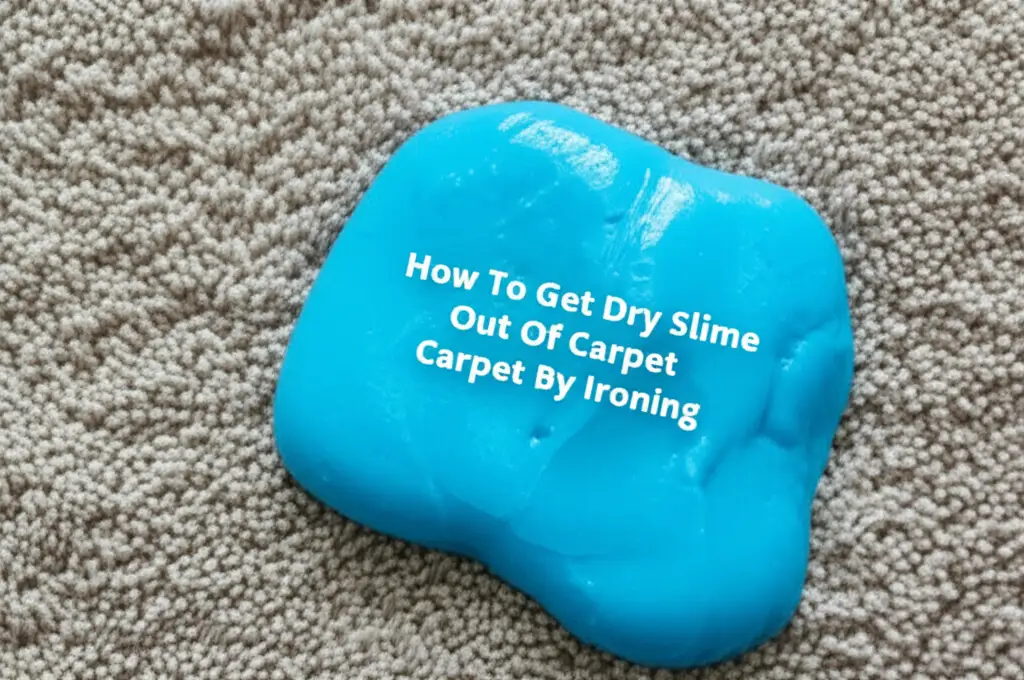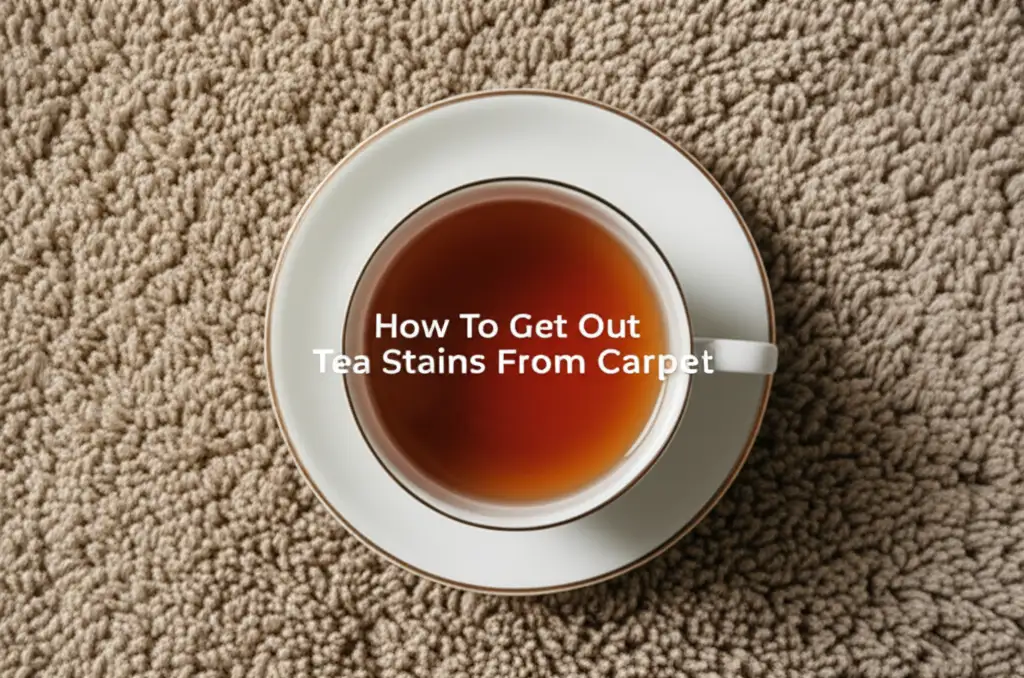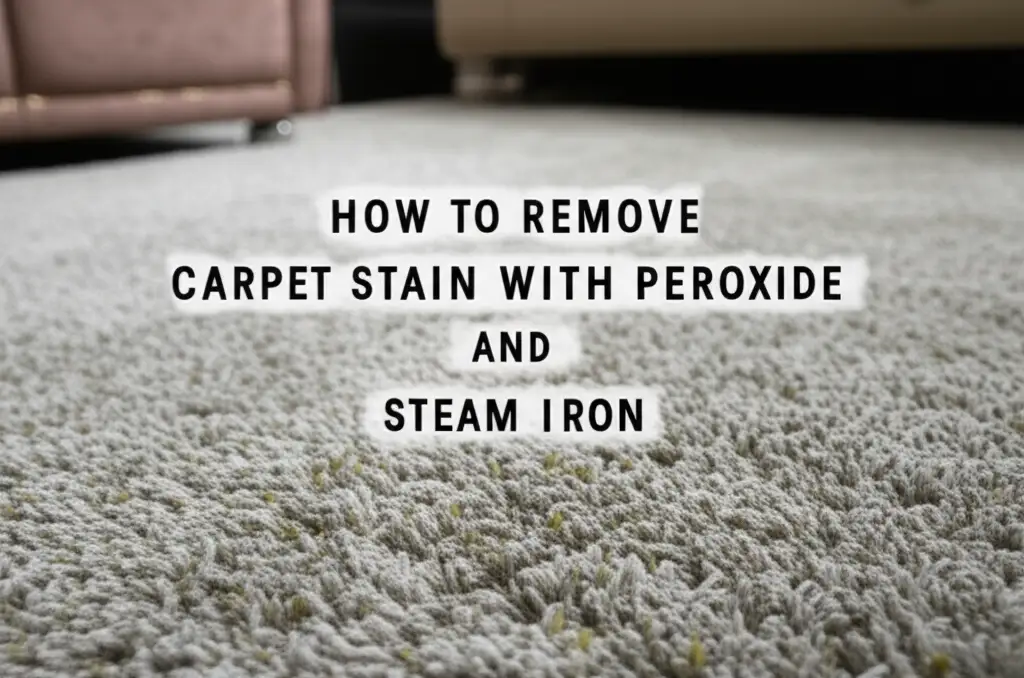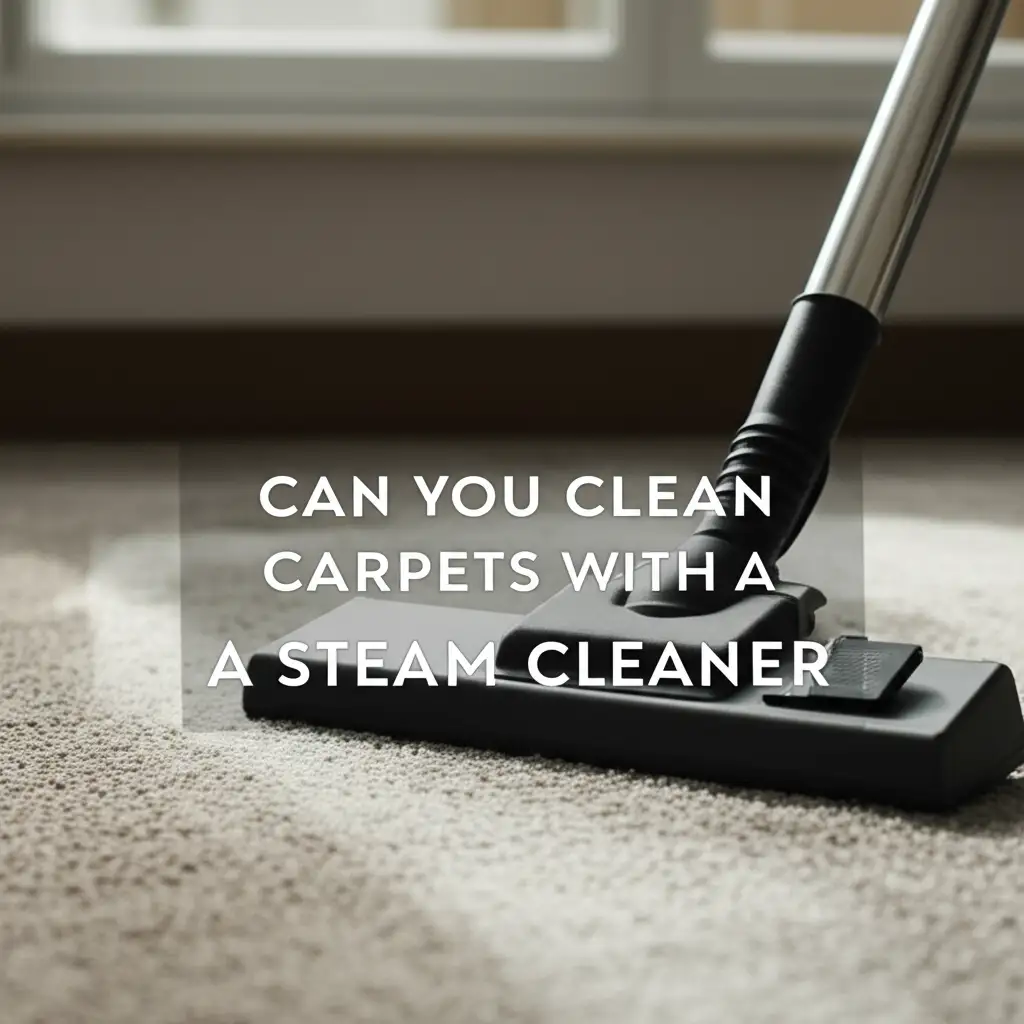· Elira Thomsen · Home Cleaning · 19 min read
How To Get Dry Slime Out Of Carpet By Ironing

How to Get Dry Slime Out of Carpet by Ironing: A Complete Guide
Finding dry slime stuck to your carpet can feel like a disaster. This sticky, colorful mess becomes a solid, hard-to-remove obstacle once it dries. Many people struggle with common cleaning methods for this type of stain. However, there is a simple, effective technique to tackle this problem: using an iron. This guide will walk you through the process of how to get dry slime out of carpet by ironing, ensuring your floors look clean again.
No one wants a vibrant patch of hardened slime ruining their beautiful carpet. This common household mishap often leaves people wondering about the best way to restore their floor’s pristine condition. Traditional scrubbing can often push the slime deeper into the fibers. It can even damage the carpet weave. The ironing method offers a gentle yet powerful solution. It uses heat to reactivate the slime, making it pliable and easy to lift. I will explain the science behind this technique. I will also provide a detailed, step-by-step approach. This article covers everything from preparing your area to post-cleaning care. We will also look at alternative methods and prevention tips. By the end, you will know exactly how to get rid of that stubborn dry slime.
Takeaway
- Prepare Your Area: Gather essential tools like an iron, paper towels, and a dull knife.
- Set Your Iron: Use a low to medium heat setting; avoid steam and high temperatures.
- Apply Heat Gently: Place paper towels over the slime, then press with the iron for short bursts.
- Lift the Slime: The heat transfers the slime onto the paper towels. Replace towels as they absorb slime.
- Clean Residue: Use rubbing alcohol or vinegar for any remaining sticky spots.
- Vacuum Thoroughly: Finish by vacuuming the area to restore carpet pile.
Dry slime stuck in carpet fibers presents a unique cleaning challenge. The best way to get dry slime out of carpet involves using an iron. This method applies gentle heat to re-liquefy the slime. The softened slime then transfers onto an absorbent material, such as paper towels. This process effectively lifts the sticky substance from the carpet. It helps restore the carpet’s appearance without harsh scrubbing.
Understanding Dry Slime and Why It’s a Challenge
Dry slime is a common household problem, especially in homes with children. Slime typically contains polymers, glue, and borax. These ingredients give it its stretchy, pliable texture. When left exposed to air, the water content evaporates from the slime. This causes the polymers to cross-link and harden. The slime becomes stiff and firmly adheres to carpet fibers.
Once dry, slime binds tightly to natural or synthetic carpet materials. This strong adhesion makes traditional scraping methods difficult. Scraping often breaks the slime into smaller, stubborn pieces. It can also push the residue deeper into the carpet pile. Additionally, aggressive scrubbing can damage the carpet fibers. It can cause fraying or discoloration. This makes the area look worse than before.
The chemical composition of slime also poses a challenge. Many household cleaners are not effective against dried polymer-based substances. Water alone may reactivate some stickiness but often leaves a residue. This residue can attract more dirt. Petroleum-based solvents can work, but they might damage carpet dyes or leave oily stains. Therefore, a method targeting the slime’s physical properties, like heat, often works best.
Understanding these challenges helps us appreciate the effectiveness of the ironing method. This technique does not rely on harsh chemicals. Instead, it leverages the thermosensitive nature of many slime formulations. It aims to reverse the hardening process. This approach is safer for most carpet types. It also provides a cleaner, more complete removal.
The goal is to soften the slime just enough to transfer it. We do not want to melt it into the carpet. This precise application of heat is key to success. It allows for a gentle yet powerful stain removal process. This method avoids the pitfalls of abrasive cleaning techniques.
The Science Behind Ironing for Slime Removal
The ironing method for removing dry slime from carpet uses a simple scientific principle: heat transfer. Slime is primarily made of a polymer. These polymers become flexible when warm and rigid when cool. When slime dries, these polymers become cross-linked and solid. Applying heat from an iron reverses this process.
The heat re-liquefies the solid slime. As the temperature rises, the polymer chains loosen their bonds. This makes the slime soft and sticky again. Placing an absorbent material, like paper towels or a clean cloth, over the slime is crucial. When the slime softens, it adheres to this material. The heat encourages the transfer. The slime moves from the carpet fibers to the paper towel.
This process is similar to how you might remove wax from a surface. The heat melts the wax, and a paper towel absorbs it. For slime, the principle is the same. The key is to use the right amount of heat. Too little heat will not soften the slime enough. Too much heat can melt the slime into the carpet fibers. It could even damage the carpet itself.
The absorbent material plays a vital role. It acts as a magnet for the heated slime. As the paper towel absorbs the slime, you replace it with a fresh one. This ensures maximum transfer. You avoid spreading the slime further into the carpet. This controlled transfer prevents residue buildup. It also minimizes potential damage to the carpet.
This method works well because it targets the physical state of the slime. It does not rely on chemical reactions that might harm your carpet. It is a gentle yet powerful way to lift stubborn, dry slime. This makes the carpet clean again. The heat method helps preserve the carpet’s texture and color.
Gathering Your Tools: What You Need for Slime Removal
Before you begin the process of getting dry slime out of carpet, gather all necessary tools. Having everything ready makes the cleaning efficient and stress-free. You want to avoid interruptions once you start. This preparation step ensures a smooth slime removal experience.
Here is a list of the items you will need:
- An Iron: A standard household clothes iron works best. Do not use a steam iron with the steam function on. Dry heat is essential for this method. Set the iron to a low to medium heat setting. Always test a hidden area of your carpet first. This confirms the carpet can withstand the heat without damage. Different carpet materials react differently to heat.
- Paper Towels or a Clean White Cloth: You will need several sheets of plain, white paper towels. Alternatively, use a clean, white, absorbent cloth. The color is important to prevent dye transfer to your carpet. The absorbency helps lift the melted slime. You will go through many sheets as the slime transfers.
- Dull Knife or Spoon: These tools are for gently scraping off any excess dry slime. Do this before applying heat. A dull edge prevents damage to your carpet fibers. This step removes the bulk of the slime. It makes the ironing process more effective.
- Rubbing Alcohol (Optional): Isopropyl alcohol can help remove any greasy residue left behind. Slime sometimes leaves a slight oily stain. This is especially true if it contains lotions or oils. Test it on an inconspicuous spot first. Ensure it does not bleach or discolor your carpet.
- White Vinegar (Optional): Like rubbing alcohol, white vinegar can address minor stains or odors. It works as a natural cleaner. Mix it with water for a diluted solution. Use it after the main slime removal. Apply sparingly to avoid oversaturating the carpet.
- Vacuum Cleaner: A good vacuum cleaner is essential for the final step. It helps remove any remaining small particles of slime. It also restores the carpet’s pile. Vacuuming gives your carpet a fresh, clean look after the treatment.
- Protective Gloves (Optional): While not strictly necessary, gloves can protect your hands. This is useful when handling cleaning solutions. They also keep your hands clean during the slime removal process.
Having these items on hand saves time. It ensures you can complete the slime removal effectively. Prepare your space by clearing the area around the slime. This provides enough room to work comfortably and safely.
Step-by-Step Guide to Ironing Dry Slime Out of Carpet
Removing dry slime from carpet using an iron is a precise process. Follow these steps carefully to ensure success and protect your carpet. I have used this method myself with great results.
1. Prepare the Slime and Carpet
First, address the bulk of the dry slime. Take your dull knife or spoon. Gently scrape away any large, raised pieces of slime. Do not dig into the carpet fibers. The goal is to remove only the excess. This reduces the amount of slime the iron needs to melt. It also makes the process faster.
Next, vacuum the surrounding area. This removes any loose dirt or debris. You want a clean work surface. This prevents pressing dirt into your carpet during the ironing process. A clean area helps you focus on the slime stain itself.
2. Set Up Your Iron
Set your iron to a low or medium heat setting. Avoid the steam setting completely. Steam adds moisture, which you do not want for this method. The goal is dry heat. If your carpet is synthetic, a lower heat is safer. For natural fibers like wool, you might use a slightly higher setting. Always perform a patch test first. Find an inconspicuous area of the carpet. Apply the iron to it for a few seconds. Check for any discoloration or damage. This step is critical to prevent permanent damage to your carpet.
3. Place Absorbent Material Over Slime
Tear off several sheets of plain white paper towels. You can also use a clean white cloth. Lay them directly over the dried slime spot. Make sure the paper towels completely cover the slime. You want enough layers to absorb the melted slime. Using white material prevents dye transfer from the paper towel to your carpet.
4. Apply Heat and Lift the Slime
Place the preheated iron directly onto the paper towels covering the slime. Do not press hard or hold the iron in one spot for too long. Apply light pressure for about 10-15 seconds. Lift the iron and check the paper towels. You should see the slime starting to transfer from the carpet to the paper towels.
Repeat this process, using fresh sections of paper towel each time. Continue ironing and replacing the paper towels. You will notice less slime transferring onto new towels. This indicates most of the slime has been removed. Be patient. This step might require several repetitions. The slime softens and adheres to the paper towels. This pulls it cleanly from the carpet fibers.
5. Address Stubborn Residue
After removing the bulk of the slime, there might be a thin film or greasy residue left. This is normal. Dampen a clean, white cloth with rubbing alcohol or white vinegar. Gently blot the affected area. Do not rub vigorously. Blotting helps dissolve any remaining stickiness. For similar sticky situations, you might find tips on how to get theraputty out of carpet helpful.
Test the alcohol or vinegar on a hidden spot first. This checks for colorfastness. Let the area air dry completely. The alcohol evaporates quickly. Vinegar may need a bit more time.
6. Final Vacuuming
Once the area is dry, vacuum the cleaned spot thoroughly. Vacuuming helps lift the carpet pile. It also removes any tiny, loosened slime particles. This step restores the carpet’s texture. It makes the cleaned area blend seamlessly with the rest of your carpet. Your carpet will look as good as new.
Post-Ironing Care and Finishing Touches
After successfully removing the dry slime from carpet using the ironing method, proper post-cleaning care ensures lasting results. This final phase focuses on restoring the carpet’s appearance. It also prepares it for future use. My experience has shown these steps make a real difference.
First, let the treated area cool completely. The carpet fibers may still be warm from the iron. Avoid walking on the spot immediately. This allows the fibers to settle back into their natural position. It also prevents re-flattening of the pile.
Next, a thorough vacuuming is crucial. Use a powerful vacuum cleaner. Go over the cleaned spot multiple times. Vacuuming helps lift and refresh the carpet pile. It removes any microscopic slime particles that may have loosened. This action also helps restore the carpet’s original texture and fluffiness. If you are interested in deep cleaning methods for different carpet types, learning how to clean a machine made carpet cleaning can offer further insights.
If any odor persists from the slime or the cleaning agents, a simple deodorizing step helps. Sprinkle a generous amount of baking soda over the area. Let it sit for at least 30 minutes, or even overnight for strong odors. Baking soda absorbs smells naturally. After the waiting period, vacuum up the baking soda completely. This leaves your carpet smelling fresh.
Inspect the carpet closely for any signs of damage. Check for discoloration or singed fibers. The low heat setting should prevent this. However, it is always wise to double-check. If you notice any slight stiffening, a gentle carpet brush can help. Lightly brush the area to separate the fibers. This restores softness.
Consider future protection for your carpet. Applying a carpet protector spray can create a barrier. This barrier makes spills and stains easier to clean. It repels liquids and prevents deep penetration. This extra layer of defense is especially useful in high-traffic areas. This can also prevent future slime incidents from becoming permanent problems. Thinking about overall carpet maintenance, you might wonder can you dry clean a carpet for professional care.
By following these post-ironing steps, you not only remove the slime but also care for your carpet. This ensures it remains in good condition for longer. These finishing touches are vital for a truly clean result.
When Ironing Isn’t Enough: Alternative Slime Removal Methods
While ironing is highly effective for getting dry slime out of carpet, sometimes it might not be enough. Very old, deeply embedded slime, or certain slime formulations, can be stubborn. In these cases, it is helpful to know about alternative methods. These methods offer different approaches to tackling the problem.
Freezing Method
The freezing method works best for fresh or slightly dried slime. It hardens the slime, making it brittle. This allows for easier removal.
- Apply Ice: Place ice cubes in a plastic bag. Put the bag directly on the slime.
- Harden the Slime: Let the ice sit for 10-15 minutes. The cold will freeze the slime.
- Scrape and Vacuum: Once the slime is frozen solid, use a dull knife or spoon. Scrape away the brittle pieces. Vacuum any remaining small fragments.
This method is gentle on carpet fibers. It avoids heat damage. It is a good first step before trying other techniques.
Solvent-Based Cleaning
For persistent residue or greasy stains left by slime, chemical solvents can be effective. Always test these in an inconspicuous area first.
- Rubbing Alcohol (Isopropyl Alcohol): This is a common and safe choice. Dab a clean white cloth with rubbing alcohol. Blot the stained area. The alcohol helps dissolve polymer components.
- Acetone (Nail Polish Remover): Use acetone with extreme caution. It can damage certain carpet fibers and dyes. Test rigorously. Apply a small amount to a cotton ball. Gently blot the slime.
- Goo Gone or Citrus-Based Cleaners: These products are designed to remove sticky residues. Follow the product instructions carefully. They often use natural solvents. They can break down the adhesive properties of slime.
When using solvents, always ensure good ventilation. Avoid saturating the carpet. Blot, do not rub, to prevent spreading the stain.
Dish Soap Solution
For general stickiness or residue, a simple dish soap solution can work.
- Mix Solution: Combine a few drops of mild dish soap with warm water.
- Apply and Blot: Dip a clean cloth into the solution. Wring it out so it is damp, not wet. Blot the slime residue.
- Rinse and Dry: Use a separate cloth dampened with plain water to rinse the area. Blot dry with a clean, dry towel.
This method is gentle. It is suitable for a first attempt at residue removal. It is also good for general surface cleaning.
Professional Carpet Cleaning
If all home remedies fail, consider professional carpet cleaning. Professionals have specialized equipment and stronger cleaning agents. They can tackle stubborn stains without damaging your carpet. They can perform dry cleaning a carpet which is a gentle, effective option for many types of carpet. They can assess the carpet type and choose the safest method. This is a good option for valuable or heavily stained carpets.
These alternative methods provide a comprehensive toolkit. They help when the ironing method needs a backup. Always prioritize the least invasive method first. Then, escalate to stronger treatments if needed.
Preventing Future Slime Mishaps
Preventing slime spills is always better than cleaning them up. Children love playing with slime, but it can be a nightmare for carpets. Taking proactive steps can save you time and effort. I have learned that prevention is key when it comes to slime.
First, designate a specific play area for slime activities. Choose a hard, non-porous surface like a kitchen table or a plastic mat. This makes cleanup easy. Avoid letting children play with slime directly on carpets or rugs. Place an old sheet or a large plastic tablecloth under the designated play area. This provides an extra layer of protection. It catches any stray slime.
Educate children about proper slime handling. Teach them to keep slime contained. Explain the importance of not dropping it on the floor. Emphasize washing hands after playing. This prevents slime residue transfer to other surfaces. Make cleanup a fun and shared responsibility.
Store slime properly when not in use. Keep it in airtight containers. This prevents it from drying out. Dried-out slime is more likely to break into pieces. It will then scatter onto your carpet. Store containers out of reach of very young children or pets.
Consider using washable rugs in high-traffic areas. These rugs are easy to toss into a washing machine if a slime incident occurs. This is a much simpler solution than treating a large carpet. For long-term carpet protection, explore options for what can I put over carpet to protect it. Clear plastic runners or area rugs can shield your main carpet.
Supervision is key, especially with younger children. Actively supervise slime play. This allows for immediate intervention if a spill happens. Catching slime when it is fresh is much easier than removing dry slime from carpet. Fresh slime can often be peeled or wiped away.
Choose slime formulations that are less sticky or “carpet-friendly.” Some brands market slime that is easier to clean. Research these options if slime play is frequent in your home. Alternatively, make your own slime at home with ingredients you control. This allows you to choose less adhesive components.
By implementing these preventive measures, you can significantly reduce the risk of future dry slime stains. This allows children to enjoy their play without constant worry about carpet damage. A little foresight goes a long way in maintaining a clean home.
FAQ Section
Is ironing safe for all carpet types?
Ironing is generally safe for most synthetic carpets like nylon or polyester on low to medium heat. For natural fibers like wool or delicate antique rugs, exercise extreme caution. Always perform a patch test in an inconspicuous area first. This checks for heat sensitivity and colorfastness. Do not use high heat.
What if the slime isn’t completely dry?
If the slime is still wet or tacky, do not use the iron immediately. First, try to scrape off as much as possible with a dull knife. Then, blot the area with paper towels to absorb excess moisture. Once mostly dry, you can proceed with the ironing method. The heat method works best on truly dry slime.
Can I use a steam iron for this method?
No, do not use the steam function on your iron. The goal is to apply dry heat. Steam adds moisture, which can make the slime spread or penetrate deeper into the carpet fibers. It can also make the removal process less effective. Ensure the iron’s water reservoir is empty or the steam setting is off.
What if the slime leaves a greasy stain after removal?
Slime, especially those with oils or lotions, can leave a greasy residue. After removing the bulk of the slime, blot the area with a clean white cloth. Dampen the cloth with rubbing alcohol or a small amount of mild dish soap solution. Gently blot the stain until it lifts. Rinse the area by blotting with a damp cloth and then dry.
How do I clean the iron after using it for slime?
After ironing, check the iron’s soleplate for any transferred slime residue. If present, wait for the iron to cool completely. Then, wipe the soleplate with a damp cloth or a cleaning pad designed for irons. For stubborn residue, gently rub with a non-abrasive cleaner. Never use sharp objects to scrape the soleplate.
What is the best way to dispose of the removed slime?
Once the slime has transferred to the paper towels, dispose of the paper towels in the trash. Do not flush slime down drains. It can solidify and cause clogs. Ensure the slime is cool and solid on the paper towels before disposal. This prevents it from re-sticking to other surfaces.
Conclusion
Tackling dry slime on your carpet might seem like a daunting task. However, the ironing method offers a remarkably simple and effective solution. We have walked through the entire process, from understanding how dry slime binds to carpet fibers to the crucial steps of heat application and post-cleaning care. You now know how to get dry slime out of carpet by ironing. This technique leverages basic science. It transforms a sticky problem into an easy-to-manage cleanup.
Remember, preparation is key. Gathering your tools and performing a patch test ensures safety and efficiency. The gentle application of heat, combined with absorbent paper towels, lifts the stubborn slime. This leaves your carpet looking fresh. Do not forget the final touches like vacuuming and addressing any minor residues. These steps bring your carpet back to its original condition. If the iron method needs backup, you now have alternative techniques like freezing or gentle solvents.
Prevention is always the best strategy for future messes. Designate specific play areas for slime. Educate children about responsible slime handling. Using protective coverings can shield your carpets from accidental spills. With these tips, you can enjoy a cleaner home environment. Your carpets will stay pristine. Go ahead and try this method. See for yourself how easy it is to restore your carpet’s beauty. Embrace these simple solutions for a happier, cleaner home.





